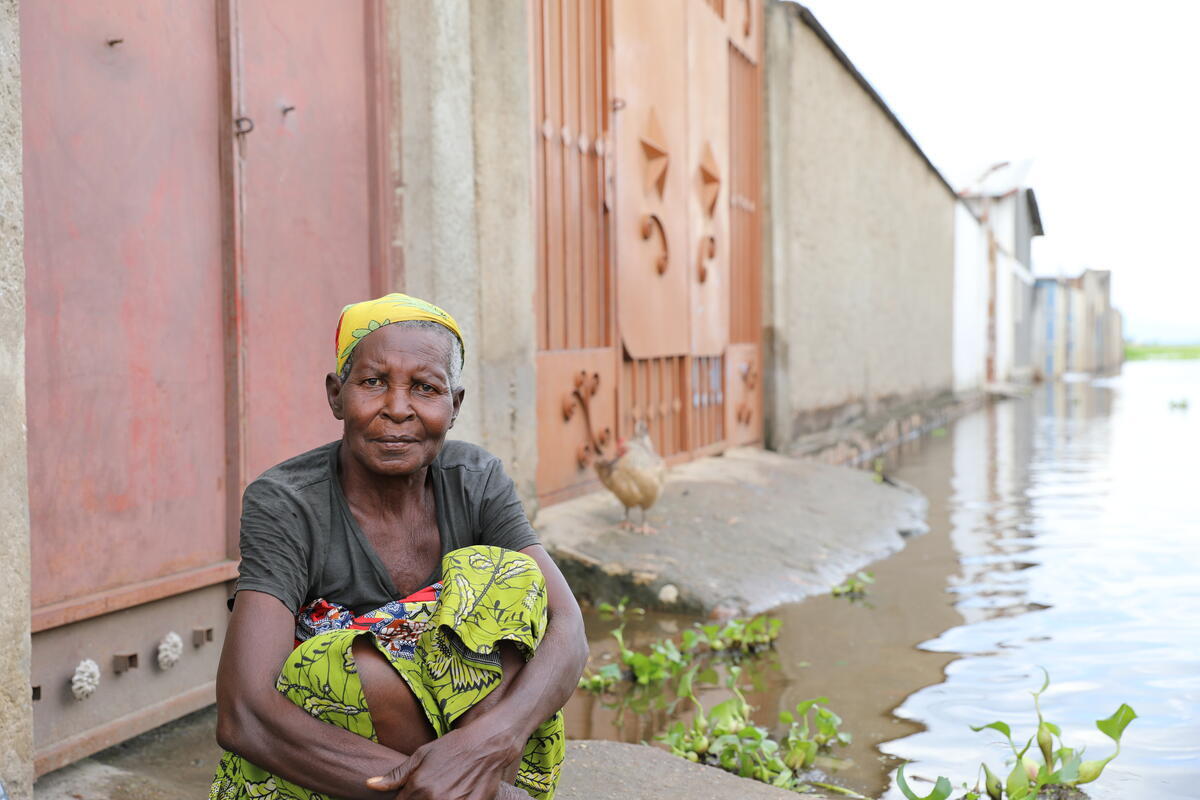More Somalis flee to volatile Yemen
More Somalis flee to volatile Yemen
The deteriorating humanitarian situation in Somalia has forced more than 318,000 Somalis to flee their country so far this year. While the majority are seeking safety and aid in neighbouring Kenya and Ethiopia, many Somalis continue to head northwards to embark on the risky sea journey across the Gulf of Aden.
Since January, 20,000 new Somali refugees have reached Yemen. In Yemen's reception centres, new arrivals have been telling our staff that drought, famine, conflict and forced conscription are the main reasons for their flight from Somalia.
The increased influx is adding pressure on Yemen and UNHCR. Between January and July Somali arrivals averaged 1600 people per month; The numbers increased to 4,500 in August and 3,292 in September - this despite unrest in Yemen. In total an estimated 196,000 Somali refugees are now in Yemen, where our resources are additionally strained by internal displacement that affects over 415,000 people.
The worsening security is making our work more dangerous and complex. Fighting in Yemen's Abyan governorate (east of Aden) means that transporting new arrivals from reception centres along the Gulf coast to the Kharaz refugee camp has become increasingly difficult. UNHCR's implementing partner, SHS, is now obliged to take a significantly longer route to reach the reception centres to avoid the on-going fighting and to reduce the frequency of convoys between the reception centres and Kharaz camp. UNHCR is informing new arrivals in the reception and transit centres along the coast about the current situation in Yemen and the potential risks. However, many refugees choose not to wait and set off on foot, through conflict-affected areas.
Most new arrivals tell UNHCR that they were unaware of the situation in Yemen and the conditions they would be facing. Many left Somalia hoping they would be able to carry on to other Gulf countries or find work in Yemen itself. However, the deteriorating security situation has curtailed their movement, and work opportunities for refugees in Yemen are rapidly shrinking. For these reasons some of the refugees are now considering returning to Somalia. UNHCR has a voluntary repatriation programme but only to the relatively stable Somali regions of Puntland and Somaliland for refugees originating from there. However, most Somalis in Yemen are from the volatile and conflict-ridden southern and central parts of Somalia.
The number of other nationals, mainly Ethiopians, arriving in the country has also increased significantly. In September, 8,787 people, virtually all of them Ethiopians, arrived in Yemen. Together with 3,292 Somalis this makes a total of 12,079 sea arrivals to Yemen in September alone - the highest monthly arrival rate since UNHCR began gathering these statistics in January 2006.
The instability in Yemen is also giving greater opportunity for human traffickers and smugglers along Yemen's Red Sea coast. Reports of abductions of migrants or refugees upon arrival to Yemen persist - mostly for ransom or extortion. While the main targets seem to be Ethiopian migrants looking for opportunities in Gulf countries, some Somali nationals have been also abducted. Insecurity often prevents patrolling humanitarian teams from reaching the new arrivals before the smugglers. Another worrying trend has been the prevalence of abuse and sexual assaults of female refugees and migrants while at sea. Together with our partners we are providing medical assistance and counselling to survivors. Information is also shared with Yemeni police for follow-up.
Meanwhile, the conflict in Yemen's Abyan governorate has displaced more than 97,000 people. There are now internally displaced people (IDPs) in five southern governorates. In Aden the school year began a month ago, but nearly 30,000 children have been unable to begin classes as around 70 public schools are sheltering over 20,000 people. As yet no alternative solution has been found.
In addition, there are still some 318,000 people displaced from Sa'ada governorate in the north. These IDPs fled the conflict between the government troops and Al Houti forces which raged in northern Yemen between August 2009 and February 2010 and are still unable to return. Due to unrest and clashes in Sana'a and surrounding areas over the last month a growing number of Yemeni civilians fled northwards to Amran. UNHCR and partners have already provided immediate assistance to vulnerable families and we are in the process of conducting a rapid assessment. Despite the unrest and insecurity, UNHCR and partners continue work on the ground providing essential protection and assistance.
For further information on this topic, please contact:
- In Aden, Edward Leposky on mobile: +967 71 222 4022
- In Geneva: Andrej Mahecic on mobile +41 79 200 7617







